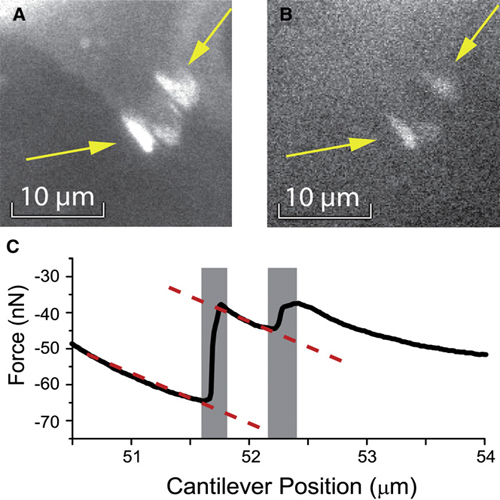Cell Adhesion Strength Is Controlled by Intermolecular Spacing of Adhesion Receptors
17-Feb-2010
Biophys J, 2010, 98, 543-51 published on 17.02.2010
Spatial patterning of biochemical cues on the micro- and nanometer scale controls numerous cellular processes such as spreading, adhesion, migration, and proliferation. Using force microscopy we show that the lateral spacing of individual integrin receptor-ligand bonds determines the strength of cell adhesion. For spacings R90 nm, focal contact formation was inhibited and the detachment forces as well as the stiffness of the cell body were significantly decreased compared to spacings %50 nm. Analyzing cell detachment at the subcellular level revealed that rupture forces of focal contacts increase with loading rate as predicted by a theoretical model for adhesion clusters. Furthermore, we show that the weak link between the intra- and extracellular space is at the intracellular side of a focal contact. Our results show that cells can amplify small differences in adhesive cues to large differences in cell adhesion strength.











